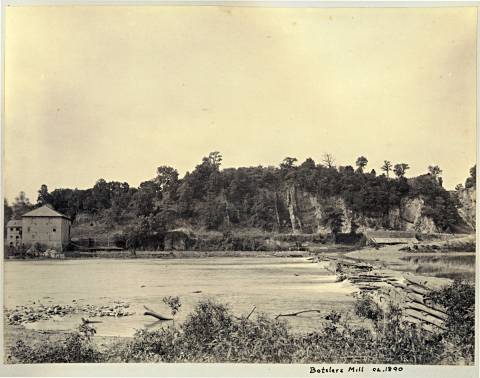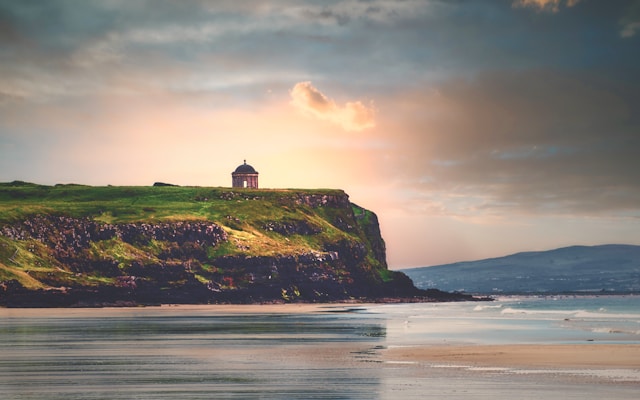THIS IS THEIR STORY
A compilation of the history of the Welsh/Walsh of Harpers Ferry, related families, and the forgotten history of the critical industrial hub that helped to build the East Coast.
Our story begins with a thirst for freedom and a chance to break the cycle of anguish and hardship that ruthlessly swept the families of Ireland.
In their eyes, there was only one unnerving solution to the painful British rule which weighed heavily upon the family of Patrick and Honora Walsh. This solution was to leave their beloved homeland behind for a chance at a better life in America.
"Oh, Ireland, how we shall forever long for thee."

WHAT WILL YOU UNEARTH?
Harpers Ferry History
For Researchers



Immerse yourself in the lives and stories of the people who walked before us and the areas they roamed.

Browse our easily searchable, cross-referenced, transcribed database of evidence and other historical accounts.
[ Unearth Historical Records ]



Explore our resources for researchers researching the Harpers Ferry area and the families who built it.
[ Explore Resources ]
A BIT O' ERIN
For I stood alone by the Shannon water
and watched the day dying,
the blood-red sun lying,
o'er Lusmagh below.
And I knew with the depth of the curlews say crying,
my heart it was sighing,
some day I would go.
One day I would leave her,
my love-land of beauty...

OUR DATABASES
We believe that every person made a contribution to history. What stories will you discover?
People
Learn about the members of the Welsh/Walsh family of Harpers Ferry and related families.
Places
Harpers Ferry, Ireland, and the important places tied to them.
Evidence
A fully cross-referenced database of transcribed historical records and manuscripts.
Photographs
Browse our growing library of historical family, location, and event photographs.
ARE YOU RELATED?
Surnames closely related to the Welsh family include Flanagan, Caton, Murphy, Slavin, and more.
THE BLOG
Hot Off The Press
St. Peter’s Catholic Church of Harpers Ferry: An Irish Parish on American Soil
Without the Irish, there would be no Catholic congregation in Harpers Ferry. Although St. Peter's is considered a Roman Catholic parish, the church historically took on an overwhelmingly Irish congregation, and tailored its sermons to the very similar, yet slightly different ideology of the Celtic rooted version of traditional Roman Catholicism.Boteler’s Mill: Labor & Cement in 19th-Century Jefferson County
In 1827, the steady rush of the Potomac River gave life to Boteler’s Mill. This thriving cement works helped build the Chesapeake & Ohio Canal and anchored industry along the eastern stretch of Jefferson County, WV. Powered by innovation and the hands of immigrant laborers, the mill’s story is one of ambition, hardship, and transformation.A Light Still Burning: The Bakerton Store
With roots in both the working class and the family that employed them, Martin Welsh built a legacy of his own in Bakerton. More than a century later, his store stands as the last surviving trace of the once-bustling quarry village along the Potomac River. Martin Welsh's life and the store he left behind shines light onto the village of Bakerton, its laboring class, and the deep-rooted connection between industry, family, and faith that defines the district of Harpers Ferry’s history.Life Between The Blasts: The Village of Bakerton
Life in Bakerton was lived between the thunder of quarry blasts and the spirit of community. When the Baker brothers established their Washington Building Lime Company in Oak Grove, near Harpers Ferry, they reshaped both the land and the community surrounding it. Beneath its whitewashed houses and tidy streets, Bakerton was alive with the labor of hard-working men, the laughter of children at Oak Grove Schoolhouse, and the steady rhythm of trains and machinery. In Bakerton, faith, industry, and resilience intertwined to create a village that glowed against the landscape of the county surrounding it.Kin to Kaldenback: Finding Mary Walsh Dunn
A newspaper mention of Mamie Kaldenback led to a trail of family connections spanning Washington D.C., Harpers Ferry, and Missouri. Through census records, city directories, and church documents, the lives of Mamie, her parents Charles and Ella, and their extended kin emerge, revealing patterns of migration, labor, and kinship.
THE EVIDENCE
Newest Historical Records












